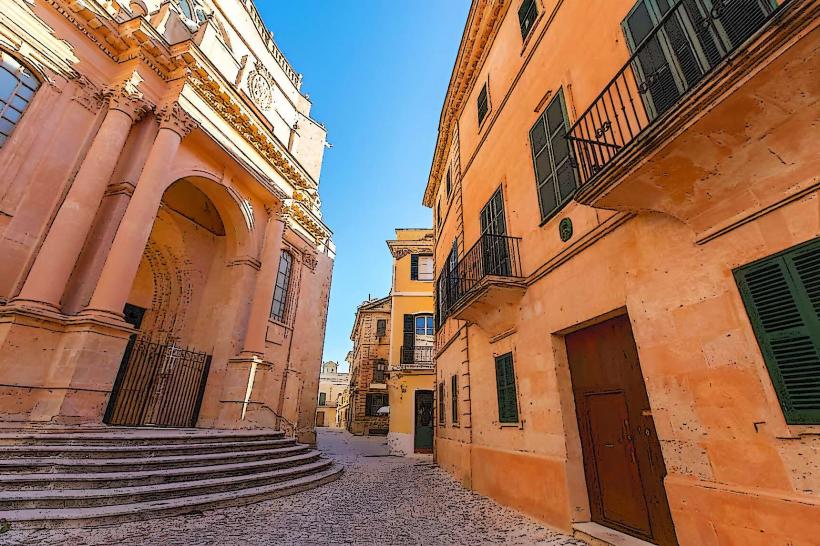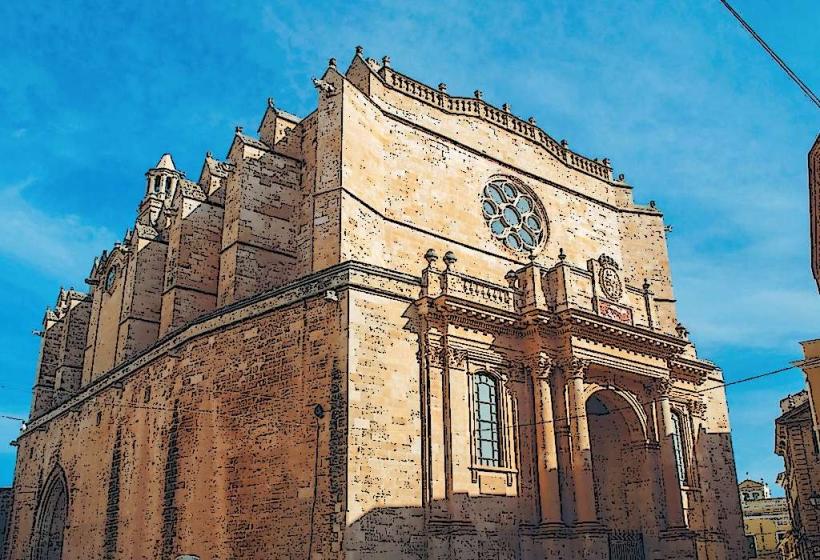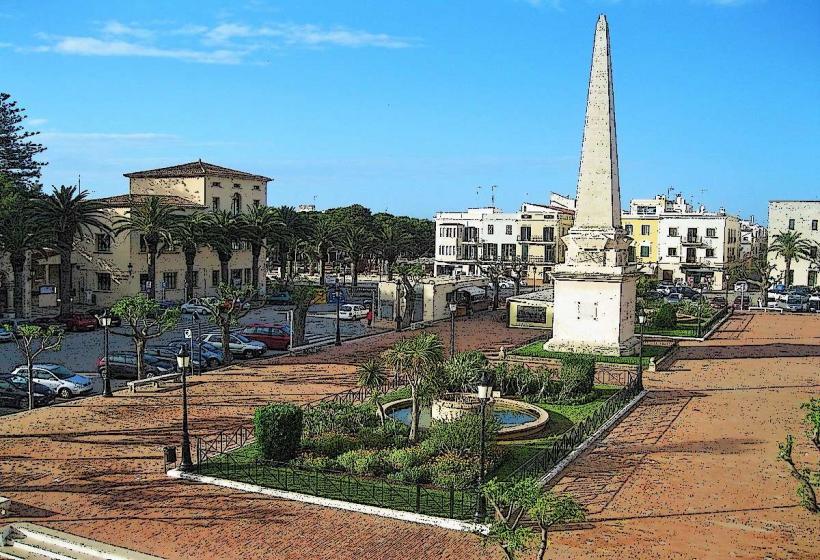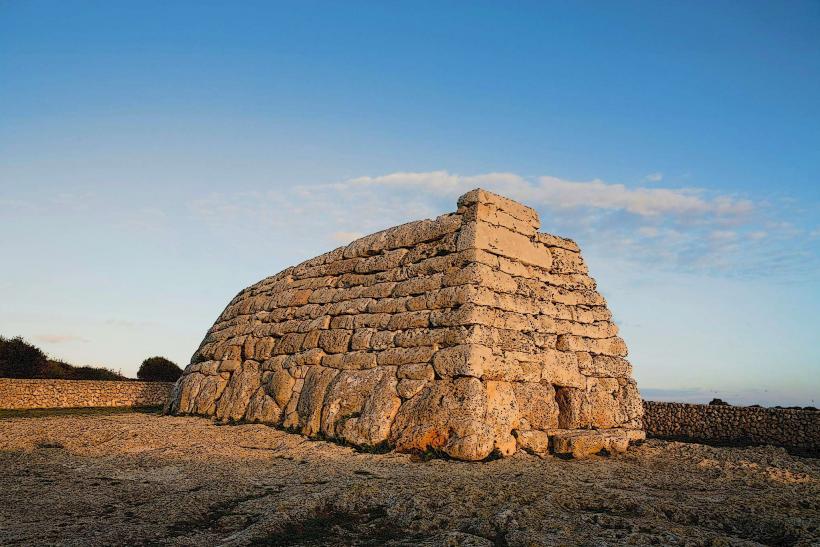Information
Landmark: Lithica Pedreres de s’HostalCity: Ciutadella
Country: Balearic Islands
Continent: Europe
Lithica Pedreres de s’Hostal is a captivating archaeological and cultural site located near the town of Ciutadella in Menorca, Spain. It is a former quarry that has been transformed into an extraordinary outdoor museum and cultural space. The site is famous for its historical significance, unique landscape, and its focus on the island’s stone extraction practices, which were vital to the construction of prehistoric monuments and buildings. Here’s a detailed look at Lithica Pedreres de s’Hostal:
1. Historical Significance
- Stone Quarrying:
The Pedreres de s'Hostal was used for stone quarrying for over 2,000 years, dating back to the Talayotic period (approximately 1000 BCE), when the Talayotic culture began to thrive in Menorca. During this time, the island’s inhabitants relied on quarries like s'Hostal to extract the limestone needed to construct the megalithic monuments of the era, including navetas, talayots, and taulas. - Stone as a Resource:
The stone quarried here was used not only for building monuments but also for houses, farming tools, and religious structures. The site holds key archaeological importance, as it connects the ancient practices of stone extraction with the construction of some of Menorca's most famous prehistoric structures.
2. Architecture and Landscape
- Unique Quarry Landscape:
The landscape of Lithica Pedreres de s’Hostal is strikingly dramatic, with its deep, stone-cut depressions, rock formations, and limestone cliffs. The quarry was carved out of the island’s natural limestone over centuries of extraction, leaving behind an extraordinary series of terraces, steps, and cavernous chambers.- The rock formations at s'Hostal are particularly notable for their cutting-edge, engineered design, with precise angles and deep recesses that demonstrate the advanced stoneworking skills of the ancient quarry workers.
- Architectural Features:
One of the most notable aspects of the site is the carved staircases and terraces that create a visually stunning effect. Visitors can walk through these ancient stone structures and experience the quarry from different perspectives, offering a unique opportunity to observe the craftsmanship of the Talayotic people and their relationship with the land.
3. Cultural and Artistic Center
- Transformation into a Cultural Space:
Over time, the Lithica Pedreres de s'Hostal site has been transformed into a cultural center and outdoor museum. The organization responsible for its preservation and transformation has opened the site to the public for educational and artistic purposes. - Exhibitions and Events:
Lithica hosts a variety of art exhibitions, workshops, and musical performances throughout the year. These events celebrate both the historical significance of the site and its modern-day use as a cultural hub. The connection between ancient stone quarrying and contemporary artistic expression is emphasized through exhibits that reflect the island’s artistic and cultural evolution.
4. Archaeological Discoveries
- Evidence of Ancient Quarrying:
Excavations at the site have revealed a wealth of archaeological evidence about the ancient quarrying methods used by the Talayotic people. Tools such as stone hammers, chisels, and other implements used in the quarrying process have been found, shedding light on the methods used to extract and shape the stone. - Prehistoric Remains:
In addition to the tools, archaeologists have discovered remains of the Talayotic people, including pottery, bone fragments, and other artifacts. These findings suggest that the site was not only a place of quarrying but also a central area for community activities and rituals. The presence of human remains points to the possibility that the quarry may have been a sacred site for the Talayotic people.
5. The Gardens of Lithica
- Botanical Gardens:
One of the most striking features of Lithica Pedreres de s'Hostal is the botanical gardens that have been developed within the quarry. The area is now home to a range of Mediterranean plants, including olive trees, cacti, and wildflowers that thrive in the rugged landscape. These gardens offer visitors the chance to experience the contrast between the stark, stone quarry environment and the natural beauty of the island’s flora. - Sculpture Park:
The site also includes a sculpture park, where modern artists have installed works that interact with the ancient stone environment. These sculptures blend art with nature, creating a harmonious relationship between the past and present. The sculptures complement the natural surroundings and enhance the visitor experience.
6. Visitor Experience
- Walking Tours:
Visitors can take guided walking tours of the quarry, where expert guides explain the history and significance of the site, including the Talayotic culture, the stone extraction process, and the evolution of the quarry into a modern cultural center. Walking through the terraces and stone chambers gives visitors a direct sense of the scale and craftsmanship of the ancient quarry workers. - Scenic Views:
The location of Lithica Pedreres de s’Hostal offers stunning views of the surrounding countryside, and visitors can enjoy the beauty of the rugged terrain while reflecting on the historical importance of the site. The quarry’s unique landscape creates an almost otherworldly atmosphere, making it a captivating place for both history enthusiasts and nature lovers.
7. Educational and Cultural Impact
- Promoting Archaeological Awareness:
Lithica is dedicated to raising awareness about the prehistory of Menorca and the Talayotic culture. The site serves as an educational space, helping to inform both the public and researchers about the techniques, tools, and structures of the ancient quarrying practices. - Sustainability and Preservation:
Efforts have been made to preserve the site’s historical integrity while ensuring that it remains accessible to visitors. The integration of art, culture, and archaeology at Lithica demonstrates a commitment to preserving Menorca’s unique heritage for future generations.
8. Conclusion
Lithica Pedreres de s’Hostal is a remarkable fusion of archaeology, history, and modern culture. The site not only offers insight into the ancient quarrying practices that shaped Menorca’s prehistoric architecture but also serves as a cultural center where visitors can engage with art, nature, and history. For anyone interested in Menorca’s Talayotic heritage, prehistoric monuments, or contemporary artistic expressions, Lithica offers a unique and memorable experience.





